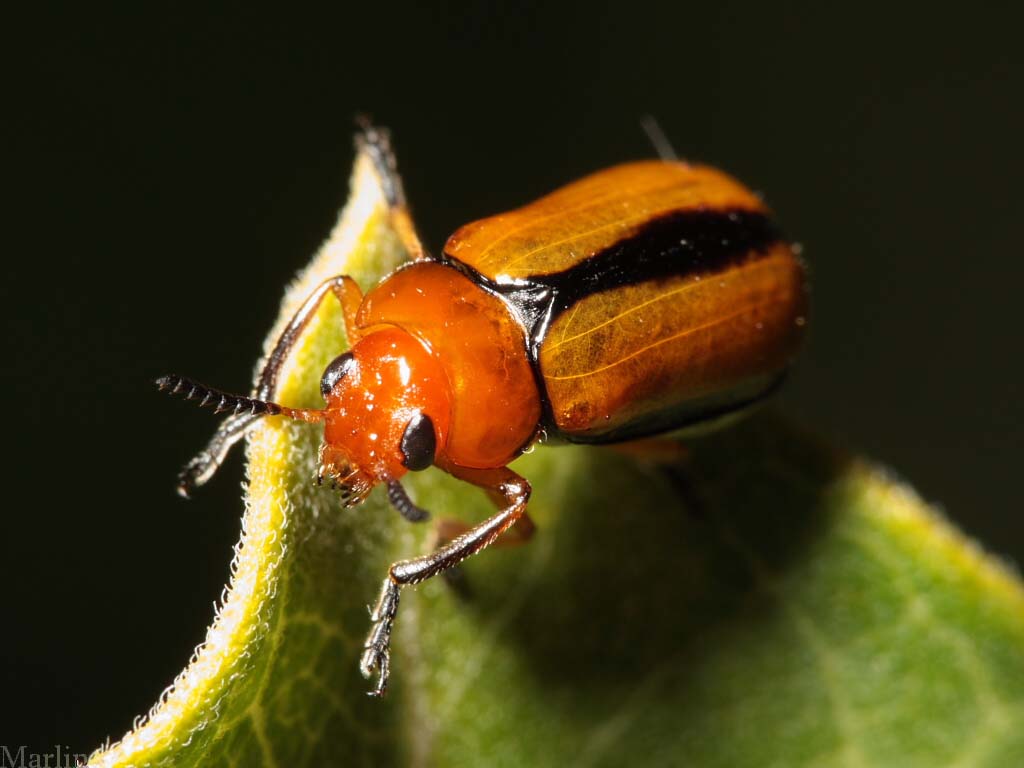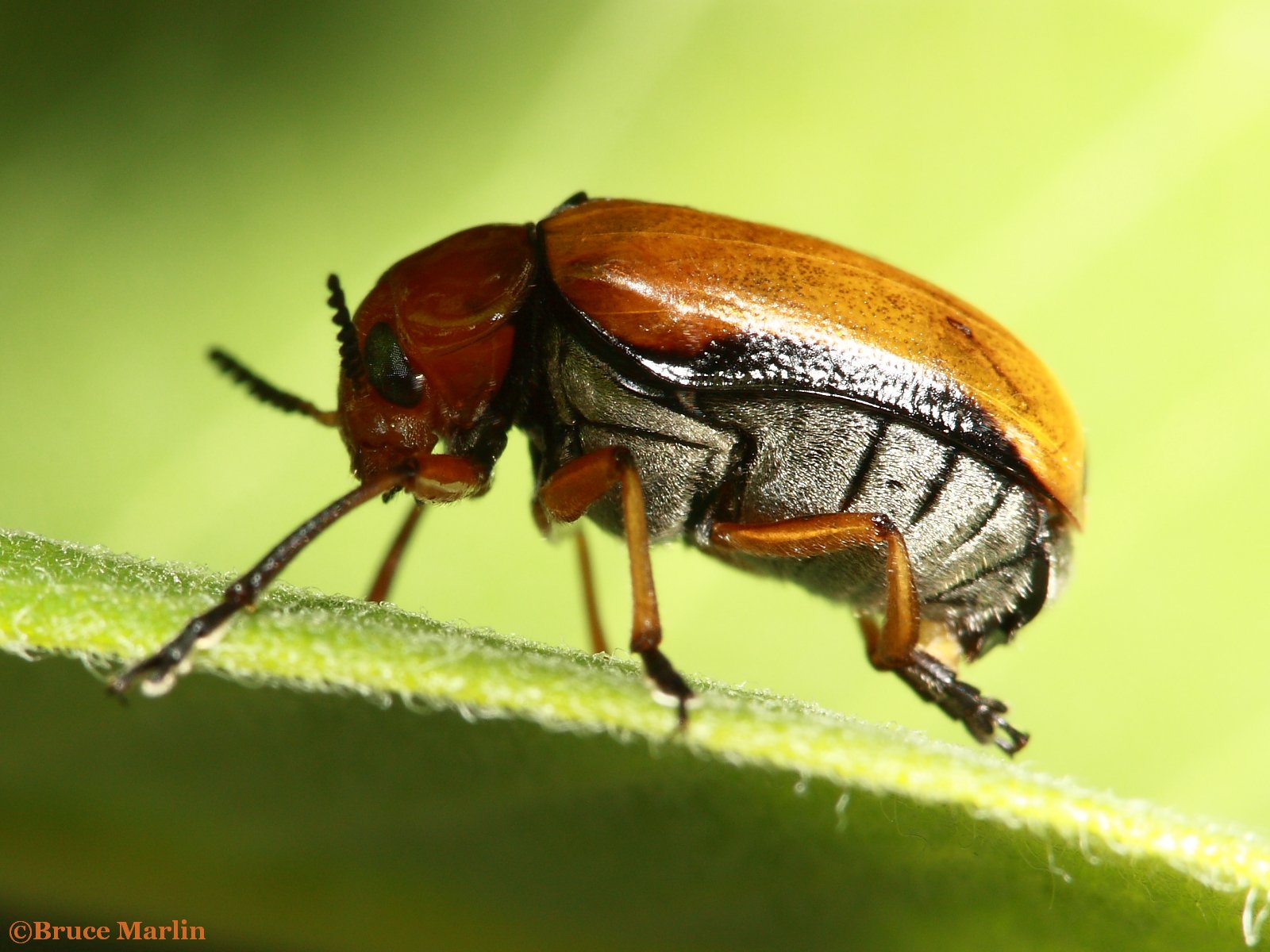Clay-colored Leaf Beetle – Anomoea laticlavia
Also commonly called Persimmon beetle. Live adult beetles photographed at Illinois. Size: 13mm
Beetles in the family Chrysomelidae are commonly called leaf beetles. It is one of the largest beetle families among the phytophagous (plant-eating) beetles. Chrysomelids are second in number of species only to the weevil, family Curculionidae. There are as many as 35,000 described species and perhaps up to 60,000 total species. Presently, the Chrysomelidae are classified in 195 genera and approximately 1,720 valid species and subspecies (plus 149 Bruchinae species) accepted as occurring in North America north of Mexico.

Leaf beetles feed strictly on plant materials. The adults usually consume leaves, stems, flowers, and pollen. Most larvae are subterranean in habit, feeding on roots and rootlets, but others will consume foliage as well. Many chrysomelids are very specific to particular host plants, but most are able to live on a variety of plants; i.e. the so-called dogbane leaf beetle, Chrysochus auratus, which feeds on prairie plants such as milkweed (Asclepias sp.) and plants in the dogbane genus Apocynum. [2]
The larval stages of beetles in the subfamily Cryptocephalinae develop inside a case made of fecal material and plant debris, hence their common name “casebearer.” They are also known as “cylindrical leaf” beetles. There are approximately 345 species in 22 genera in North America. You can find a very nice picture of this beetle’s larva HERE.
This beetle is assuming a defensive posture known as “headstanding”. This behavior is well-known in other families of beetles, most notably the Tenebrionidae. In the deserts of the American southwest, there exists an enormous number of jet-black beetles in this family; their principle means of defense is a discharge of foul-smelling and irritating chemical from glands at the tip of the abdomen. Upon being disturbed by a would-be predator, they assume the position seen in the image above, preparatory to actually discharging their chemical countermeasures.
The glandular discharge contains several irritants and hydrocarbons, including quinones and caprylic acid. [4] Such fluids require great energy to produce, and are not squandered readily. Headstanding acts in the same manner as a rattlesnake’s rattle: it’s an unmistakable warning to predators.
I don’t know if A. laticlavia has such glands or uses such defense, or if the beetle is acting as a Batesian mimic of one which does. (A Batesian mimic is an organism which is intrinsically defenseless, but relies on being confused with a truly dangerous one).
References
- JR, Ross H. Arnett et al., American Beetles, Volume II: Polyphaga: Scarabaeoidea through Curculionoidea, 1st ed. (CRC, 2002).
- Jurgen Gross, On the Evolution of Host Plant Specialization in Leaf Beetles (Logos, 2001).
- Kim Fleming, Bugguide.net, Casebearing Larva, Anomoea laticlavia
- Thomas Eisner, Maria Eisner, and Melody Siegler, Secret Weapons: Defenses of Insects, Spiders, Scorpions, and Other Many-Legged Creatures
Beetles Index | Longhorns | Leaf Beetles | Soldier | Blister | Lady | Scarab

